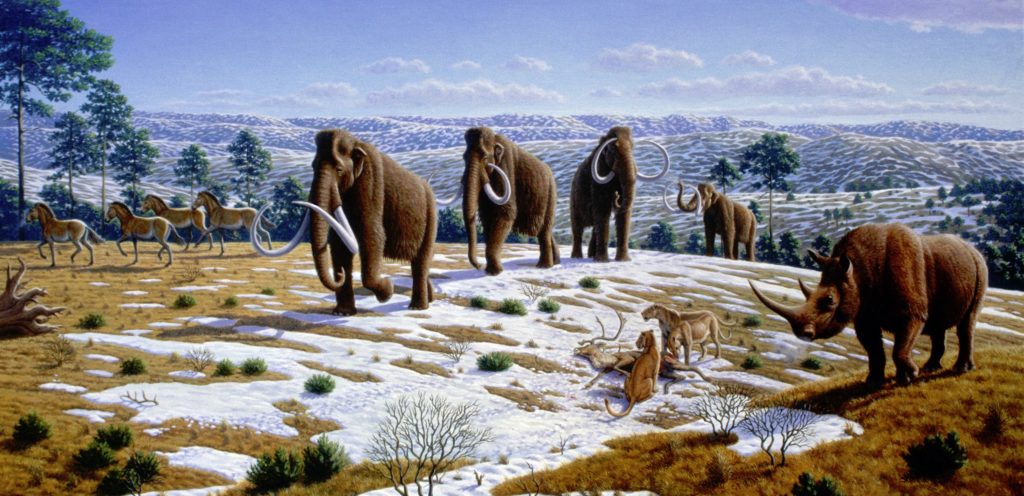Big animals make lots of dung. And where there’s dung, there’s dung beetles. Researchers counted fossilized dung beetles to figure out the quantity of megafauna–animals weighing 97 pounds or more–at 98 sites from four time periods in Great Britain. The higher the percentage of fossilized dung beetles, the more ancient dung and the greater the number of large animals.
Did herds of extinct large animals create certain patterns of vegetation in Europe, including Great Britain? Today, elephants grazing in Africa limit the growth of trees and shrubs resulting in open savanna–extensive grasslands dotted with trees. In a free article published in the Proceedings of the National Academy of Sciences, researchers asked whether extinct megafauna had a similar effect, causing a mix of forests and open pastures.
Addressing that question requires knowing what type of vegetation existed thousands of years ago. Luckily, beetles don’t just specialize in dung. They also specialize in living tree leaves and deadwood. The researchers counted the proportion of fossilized beetles associated with forest at each site to determine whether the area was forested, a mix of woodlands and pastures or mainly pastures.
The study concludes that abundant herds of diverse, large herbivores co-existed with mixed forest and semi-open vegetation during the Last Interglacial (132,000-110,000 years Before Present). In contrast, when there were fewer large herbivores during the early Holocene (10,000-5,000 y B.P), Great Britain had closed canopy forests. The underlying issue is what’s natural? The open, green hills of Great Britain are artificial; large numbers of domesticated grazing animals prevent forests from dominating. This study suggests that closed forest was also artificial. It only existed because most of Great Britain’s megafauna, for example reindeer, straight-tusked elephants, woolly mammoths and woolly rhinoceros, died off at least partially due to human influence.
The mix of forest and pastures found in the Last Interglacial is inherently more diverse in plants and animals. The study’s authors use their findings to call for recreating higher diversity landscapes through rewilding. Rewilding means conserving abandoned rural lands through allowing or reintroducing large wild carnivores and herbivores, then minimizing human interference.
Are you the author of this article? We had a site crash back in 2016 and lost some author attributions. We promise this is not a snub! Please email us and let us know that this is your post. Thanks and apologies!


